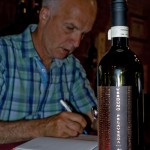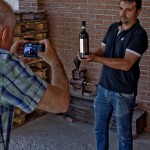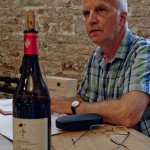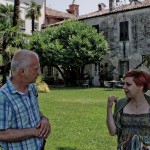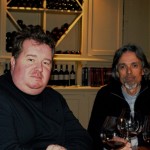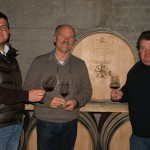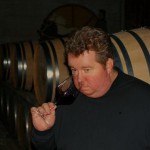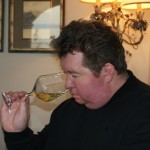Testimonials
The “Strada del Barolo” on “Le Figaro VIN”, the portal dedicated to wine of the French newspaper “Le Figaro”.

The “Strada del Barolo” on “Le Figaro VIN“, the portal dedicated to wine of the French newspaper “Le Figaro”: “stop on the Piedmont hills, where it is produced one of the best red wines in the world: Barolo”.
L’Università di Scienze Gastronomiche premia Bruno Giacosa: articolo di Roberto Fiori sulla Stampa.

Articolo di Giorgio Bocca tratto da Repubblica

Article by Eric Asimov in the International Herald Tribune

Article by Eric Asimov in the International Herald Tribune
This was no ordinary Sunday. An atounding group of old Barolos was calling, along with a lovely dinner and congenial company. It was a call I could not ignore…
Articolo di Enrico Martino tratto dai ‘MERIDIANI’

Articolo di Francesca Ciancio, Gambero Rosso

Articolo di Mariagrazia Orlandi, numero 33 della rivista “The world of fine wine”

Tra i baroli premiati tanti i soci della Strada del Barolo e grandi Vini di Langa.

They say about the Langhe
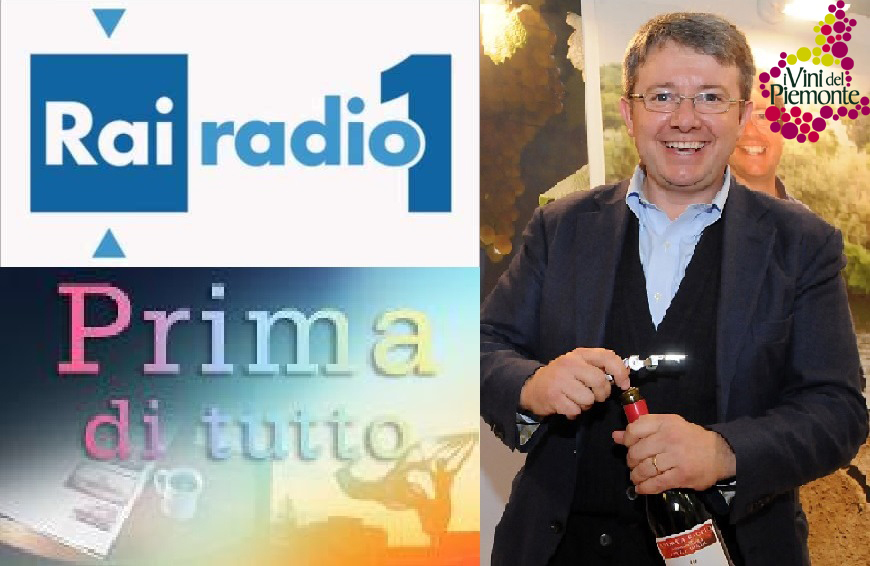
Izabela Kamińska, reporter for the most authoritative online magazine of Poland’s on the subject of wine, met with the producers of the “Strada del Barolo”.

Philologist, translator, teacher, author of several books and great traveller, Izabela Kamińska discovered her passion for wine a few years ago, when she opened a wine-bar in Warsaw with Joanna Kolodziejczak: since then, she has studied and tasted wines from many countries and, starting in 2012, has permanently worked with winicjatywa.pl, the most influential Polish online wine magazine.
Izabela has spent a few days in Langhe, where she has met several producers of Strada del Barolo and tasted wines with particular attention on Nascetta and Pelaverga.
At the end of her visit, we talked to her to better understand the dynamics relating to the wine market in a country, such as Poland, where consumption has grown enormously in the last few years.
Which wine producing countries are mainly imported into Poland?
Talking about wines of medium-high quality and leaving out the so called “supermarket” products, Italy is certainly in first place for number of bottles sold, followed by Spain and France. But it is important to notice that French wines are still perceived as the most refined, even if they are sold less because of their price and because they are considered the most “difficult”. Finally, as table wines, those from Georgia are also imported a lot.
The wine market in Poland has grown a lot in recent years: how would you describe Polish consumers? Which wines do they love best? What are they looking for in a wine?
I can confirm that wine consumption is growing dramatically at all levels, but we must consider that the market is firmly divided in two: on one side we have consumers who live in big cities, such as Warsaw, Cracow and Wrocław, who travel, have a medium level education, a fair expense capability and are generally able to distinguish wines of a certain level. On the other side, instead, there are consumers from the most rural and poor regions of the country, who started to approach wine during its boom: these people are only interested in spending a little bit of money, and do not have any idea what quality wine is! That said, we must also take into account that the most “demanding” consumers, on average, do not want to spend more than 10-12 euros per bottle.
For what concerns types of wine, the Polish do not have a particular preference: in general they drink red wine in winter and white in summer. I can still add that Prosecco and Cava are two of the most appreciated wines of the middle class.
How are Italian wines considered compared to those from other countries?
The Polish mainly know Northern Italy, because they go there in the skiing season, and Tuscany, which is the favourite destination for summer holidays, so they mainly refer to the wines of these two areas and buy them with pleasure because they associate them with their vacations. Moreover, the Polish palate loves sugar very much, so they tend to prefer wines from warm countries: Italian wines are considered “warmer”, easier than the French wines and this is the reason why they are sold more, even those that actually do not coincide with this stereotype…
And what about Piedmontese wines?
I have to admit that Tuscan wines are most well known. We heard people talking about Piedmont often because of Barolo, but many consumers have probably never tasted it: they mainly know it for its fame. This means that Piedmontese wines have great margins to penetrate Poland.
Iza, tell us how your passion for wine started and how it turned into a profession.
I had taught French at University for several years, eventually becoming responsible for that department… then, one day, a friend asked me to cooperate with her in the opening of a new wine-bar in Warsaw on the banks of river Wisle: at that time I wasn’t particularly an expert on wines, but I leapt to my feet and studied it, together with the work in the bar and a great number of trips around the world to discover new gems to propose to our customers. The first bars of this genre in Warsaw had opened some 4-5 years before and at that time there really was a boom; I tried to distinguish from the others by proposing less known wines and offering some 50 different labels served by the glass. At the beginning, it was very hard, but I really wanted to educate people and finally success arrived! Then, Wojciech Bońkowski came to my bar and asked me to cooperate with his most recent project: the launch of an online magazine entirely dedicated to the wine world. www.winicjatywa.pl was born in 2012 and in a short while it had become the most widespread in Poland, with 35,000 readers per month.
Give us a little preview on what you are going to write about concerning Piedmont and its wines.
I will for sure write an article entirely dedicated to Nascetta on winicjatywa.pl and also one in the Norwegian magazine Brevin, to which I contribute, because I know that this wine is also imported to Norway. Moreover, I have made a little video-interview with Enrico Rivetto in Polish: it has been really interesting talking with him because he knows Poland very well and I think that if a Piedmontese producer wants to enter this market they would do well exchanging views with him.
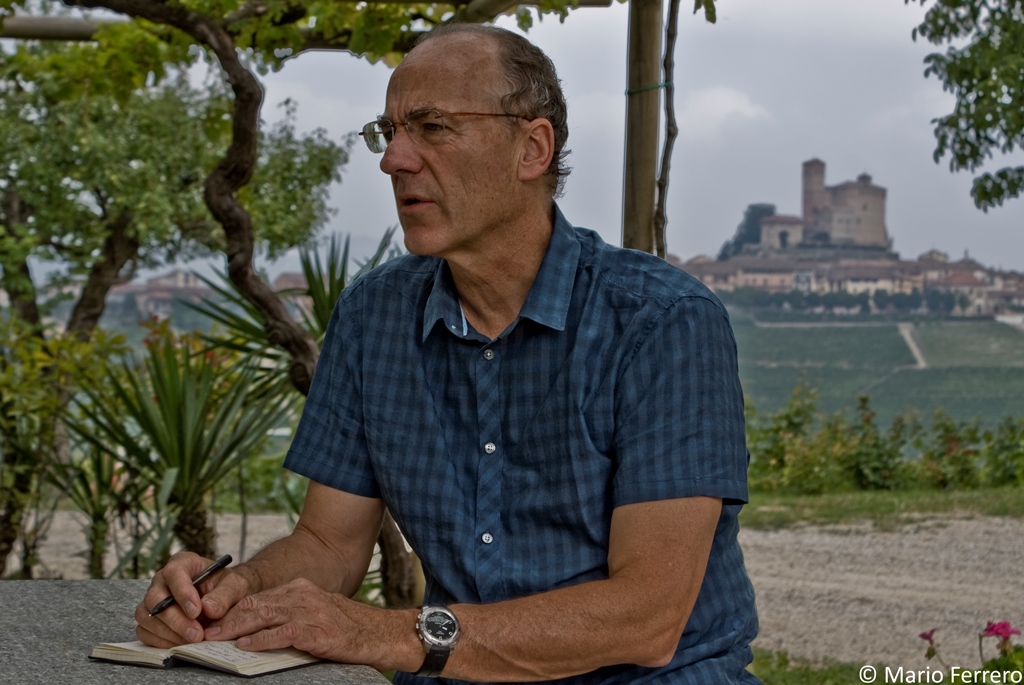
Interview with Preben Nielsen, Danish journalist and writer, founder of the website vinsiderne.dk, a portal totally dedicated to wine
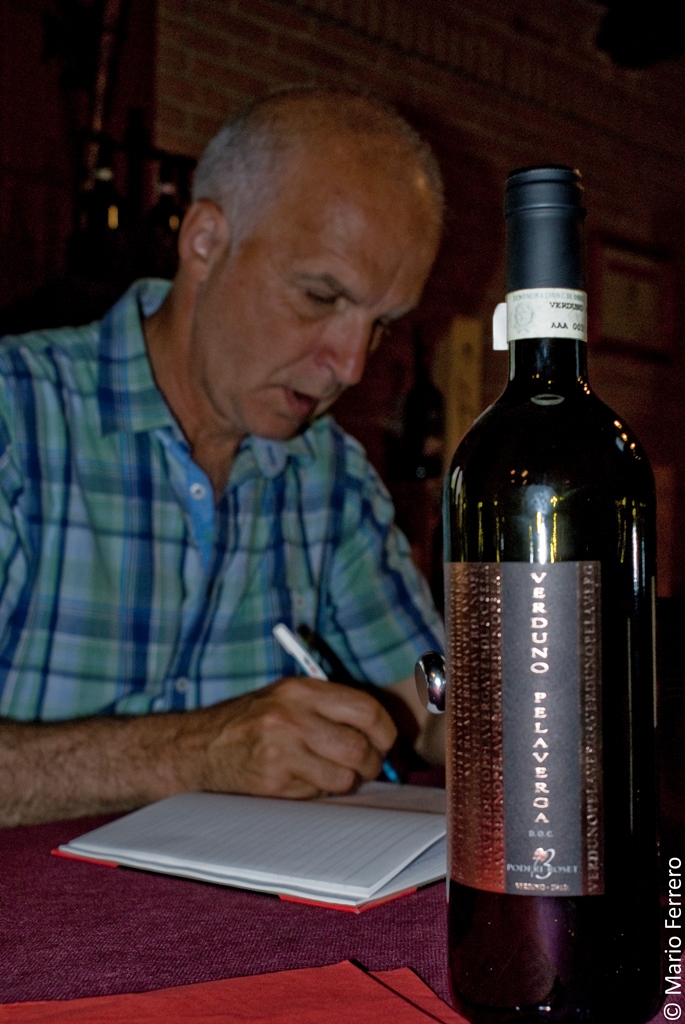
Danish journalist and writer Preben Nielsen, founder of the website vinsiderne.dk – a portal totally dedicated to wine, spent a few days in Langhe, as guest of the Consortium “i Vini del Piemonte”, where he met a variety of producers and tasted different wines of the area, with a particular attention on Nascetta and Pelaverga.
After taking part in the last two editions of Barolo & Friends Event of Copenhagen (the most important event organized by the Consortium “i Vini del Piemonte”), Nielsen could also exploit this journey in Piedmont to take part in Io, Barolo – la nuit, the annual appointment organized by Strada del Barolo e Grandi Vini di Langa, to celebrate the new vintage of Barolo together with all the producers who are members of the Consortium. We were also able to profit from the situation by being able to ask him a few questions and try to understand what the perception is of the Piedmontese Italian wines in Denmark.
Which wine producing countries are mainly imported into Denmark?
Until few years ago, French wines were, without any doubt, the most sold and widespread. In the last few years, though, France did little to promote them and the Danish have started to discover Chilean, Spanish and, above all, Italian wines. Today, I think Italy is steadily approaching first or second place in terms of numbers of bottles and labels available in Denmark.
Which types of wine best suit the taste of the Danish consumers?
Red and firm wines, without doubt. Here summer is very short and the white wines are less appropriate for our weather conditions…
What do you think about the wine market in Denmark concerning prices, quality, selection, supply and prospects?
The Danish market is varied and complete: there is a wide choice of quality wines and also of less expensive wines. Some 80% of distribution is made through supermarkets and big chain stores, but there are also small and very small importers who carry on this activity with great enthusiasm. For many of them, it is a second job that they do for passion. Normally, wine lovers, that we do not have to forget, are a small part of the population and prefer to buy from different kinds of importers. Despite the wide choice of products, the possibilities for quality wines are many: almost every week a new importer appears on the market.
What are the most renowned Italian wines?
Valpolicella Ripasso is the most consumed and, in general, the red wines from Veneto are on top, followed by those from Piedmont and Tuscany.
What do the Danish think of Piedmontese wines?
The most renowned and consumed Piedmontese wine is Barbera, while Barolo and Barbaresco are famous especially for their name (also because they are more advertised) but clearly they are not wines to be drunk every day. On the contrary, Dolcetto can be seen only rarely on the shelves of the sellers.
Preben, tell us more about how your passion for wine turned into a profession.
Actually, it is not possible to talk about a profession. Even if it commits me more than a job, I carry out this activity only for passion: this is the only way I can feel totally free to write what I want. Moreover, my website does not include advertisements. That said, I think I can say that this passion started when I was 20, the day I drank my first glass of wine: that glass changed my life, I started immediately taking notes to recall the characteristics of the wines I was tasting and the feelings they could transmit to me. Soon after, I started writing my first reviews. This activity allowed me to combine together my passions for writing, taking pictures and quality products and gave me the opportunity to help people by guiding them in the choice of what to drink: I think this is the most important aspect of what I do; I really feel great satisfaction when someone thanks me for a suggestion…
Give us a little preview on what you are going to write about concerning Piedmont and its wines.
I think I will talk about Nascetta and Pelaverga, mainly because these days I have particularly deep knowledge of those two wines. Then, instead of writing in detail about all the wines I have tasted, I would like to detail a general framework of this trip: the wines are important, but what is more important are the people behind the wines, to whom they transmit their identity.
Do you have any tips to improve the promotion of our wines on the Danish market?
In Piedmont, you are very active at this moment. Proof is evident in the success obtained by the event you organize which year after year continues to widen its popularity. Barolo & Friends is extremely useful for promotion because it is aimed at both importers and to final consumers, giving wine lovers the opportunity to learn more about the wines through seminars and workshops built around the pairing between wine and food. The most important thing, though, is to keep on promoting even when you are already famous and recognizable: the French haven’t been able to do so and now they have to face the consequences.
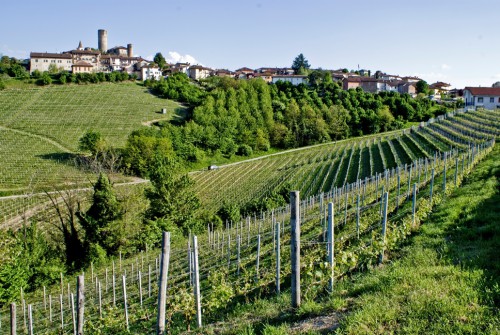
The queen of wine writers talks about Piemonte, Italian wine, and the newest market tendencies: “Consumers’ curiosity is growing, but will we be able to satisfy it?”
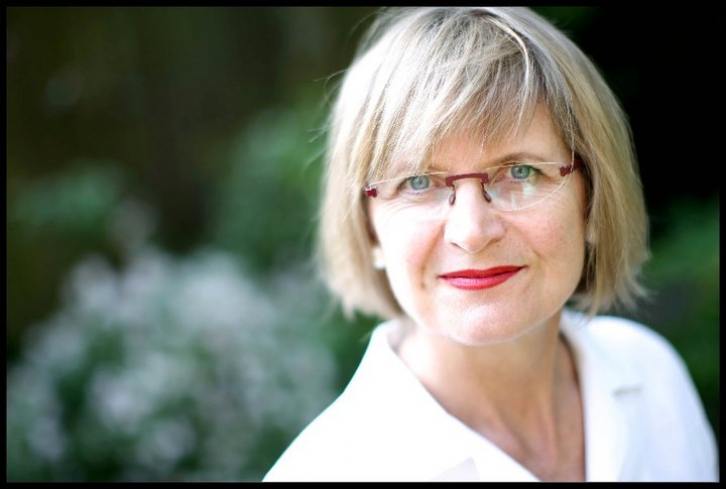
The queen of wine writers talks about Piemonte, Italian wine, and the newest market tendencies: “Consumers’ curiosity is growing, but will we be able to satisfy it?”
Saturday October 12th on the occasion of the presentation of the twinning between Burgenland and Strada del Barolo, the Austrian TV ORF has set up a service on the 83rd International Truffle White Fair of Alba.
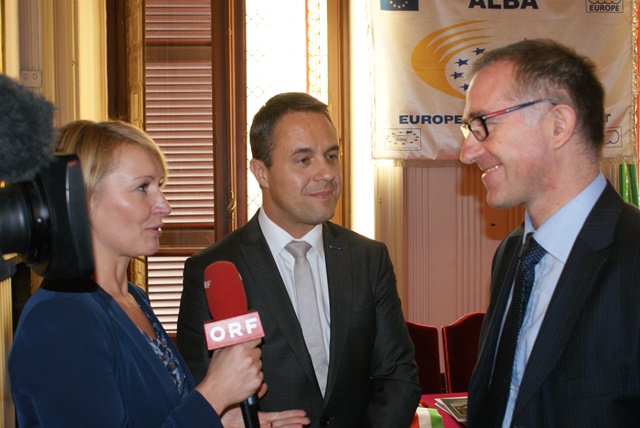
Saturday October 12th 2013 in Alba, was officially presented the twinning between the Austrian region of Burgenland and the Strada del Barolo on the occasion of 83rd International Truffle White Fair.
Together with the Austrian delegation, arrived in Alba to sign the partnership agreement, there was also a film crew of the television station ORF, who visited the city and the surrounding hills to create a service that aired Monday October 14th 2013 on the regional news of Burgenland.
Watch the broadcast by ORF:
Gemellaggio Burgenland Strada del Barolo from Strada del Barolo on Vimeo.
Three of our members appear in a top ten on the column “Dining & Wine” by the American reviewer Eric Asimov.

Three of our members appear in a top ten on the column “Dining & Wine” by the American reviewer Eric Asimov.
Poderi Einaudi, Anna Maria Abbona and Francesco Boschis: they are the members of Strada del Barolo or I Vini del Piemonte consortium inserted by Eric Asimov in the top ten of the best Dolcetto di Dogliani winemakers.
Michal Šetka, editor-in-chief of Wine & Degustation, the most important wine magazine in the Czech Republic, has been a guest of Strada del Barolo.
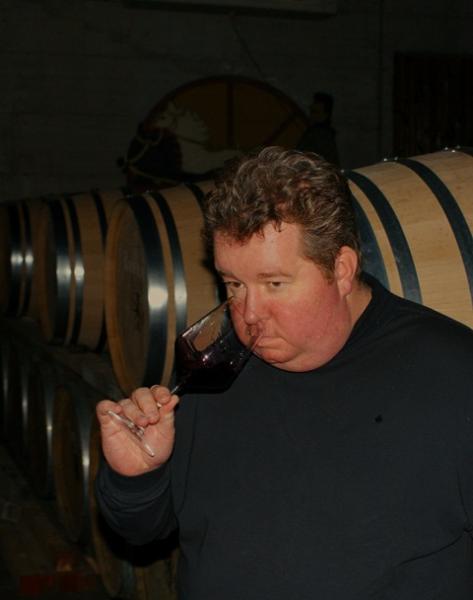
Michal Šetka, editor-in-chief of Wine & Degustation, the most important wine magazine in the Czech Republic, has been a guest of Strada del Barolo.
The journalist, who has already been to Piedmont several times, has spent two days among the hills ofLanghe, Roero and Monferrato to pinpoint the details of the promotional event which will take place in Prague in autumn, in cooperation with the magazine Wine & Degustation and the Czech event agency Arno Vino. Šetka has met some Piedmontese producers, has talked with them and tasted their wines, in order to publish a reportage on his magazine. At the end of his visits he answered few questions.
Michal, in the last few years the consumption of wine in the Czech Republic has grown by a remarkable degree, do you think it will continue to grow in the future or is it just a temporary trend?
The interest of the Czechs for wine is growing: this is a trend which is strengthening year after year. It is especially the new generations which are approaching the wine world: we can verify it every day thanks to the number of people who follow our Facebook page and this can suggest that it is not just a temporary or niche phenomenon. The Czech winelovers are not only interested in the wine, but also to the story behind it: young people want to travel, discover lands, culture and traditions connected to wine.
What kind of wines mostly meet the taste of Czech consumers?
It is difficult to decide a prevailing taste: the Czechs love both fresh, fruity wines and red wines, even the complex ones. In general, the consumption points at European wines: the Czech winelovers mainly look for the elegance in wines, more than the powerness, they love quality wines and are perfectly able to recognize the origin of a product.
Which of the wine-producing Countries are more present in the Czech republic?
It depends on the price range: if we talk about high quality wines, without any doubts France and Italy, which are equally present.
How are the Italian wines considered, in comparison with those of the other producing Countries?
Italian wines are very renowned, especially thanks to the gastronomy and the dining sector: in the last few years the Italian restaurants are achieving resounding success not only in Prague, but in the entire Czech Republic. Italy is particularly admired because it is a country with unique traits and, above all, rich in local wines: in Italy many regions have a strong wine tradition and this leads to having a huge choice of wines.
And how are Piedmontese wines considered?
Barolo and Barbaresco are the most famous wines, but since the price is quite high, their consumption is mainly related to special occasions. Barbera is quite renowned, especially thanks to restaurants, and it is very esteemed because the high level of acidity meets the local taste. I think Piedmont should focus mainly on wines like Roero, Dolcetto and Gavi: high quality products with more affordable prices, which are less renowned but which would surely have a great success with the proper promotion.
What is your opinion about the wine market in the Czech Republic: prices, quality, choice, distribution, perspectives?
The market of the Czech Republic is quite saturated: the range of available products is quite wide and goes from extremely cheap wines to top quality wines: Italian, French and Spanish but also wines coming from other countries of Europe and the rest of the world. The great names of Burgundy, Tuscany or Piedmont are easily available: I wouldn’t have any problem finding a bottle of Giacomo Conterno tomorrow morning. As I said before, what is maybe missing are quality products with reasonable prices and it is towards this direction that you should go: the Czechs are very open to new discoveries, they want to know and learn.
Michal, tell us how your passion for wines has become your job.
Everything started with photography: after a career in the music field, which I abandoned several years ago, I studied photography and I started to take pictures, among others, of subjects related to the wine world. And so I started my interest for this sector: I literally fell in love and I decided to deepen my knowledge by attending courses, travelling and researching. What really fascinates me about wine is the fact that every producer, every label has a story to tell, and the story is made of work, sacrifice but also satisfaction. So, beside photography, I started writing articles for different magazines of the sector, until 2009 when, after a cooperation with “Decanter”, I started the project: “Wine & Degustation”, today the most read magazine on wine in the Czech Republic.
Give us a preview on what you are going to write on Piedmont and its wines.
I have met a new generation of producers, who prove to have modern and intelligent ideas. What impressed me most, has been the capability to provide a global presentation of the area: I think this is the best solution for a region like Piedmont, which offers an excellent variety of wines, some appropriate for special occasions and others that can be regularly appreciated. This trait makes the Piedmontese market extremely interesting for my country and I hope that the event which will be organized in Prague in autumn could become the starting point to open a real project for Piedmont in the Czech Republic.
Which is the wine you mostly appreciated these two days?
At Mario Olivero’s and Anselma Giacomo’s I tasted several different Barolo and Barbera, which I already knew quite well, and which confirmed my positive opinion. I was very surprised by the quality of Pinot Noir by Marchesi Alfieri, an absolute rarity for these regions! I was definitively impressed by the Roero Arneis wines of Malvirà, where I also discovered the sweet Brachetto for the first time. Finally, at the restaurant Ca’ del Lupo, I had the opportunity to drink, for the second or third time, a Nascetta, which I only knew a little.
What else did you appreciate about this visit in Piedmont?
Without any doubt, the beauty of the landscape, which is amazing, and also the flavours of the food as well as the people’s hospitality, another unique trait of these lands.
- Šetka da Marchesi Alfieri
- Šetka da Malvirà
- Michal Šetka ospite della Strada
- Michal Šetka ospite della Strada
Un articolo del Sole 24 Ore del 27 novembre 2012 fotografa punti di forza e di debolezza del polo vitivinicolo di Langhe, Roero e Monferrato.

Servizio di StudioAperto – 21 novembre 2011

Antonio Galloni, former wine critic for Robert Parker’s influential publication The Wine Advocate, responds to some questions about Piedmont wine, its international appeal, and its touristic potential.
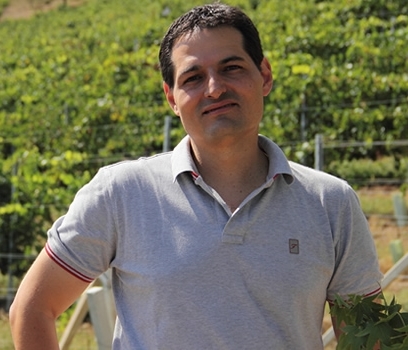
Antonio Galloni, former wine critic for Robert Parker’s influential publication The Wine Advocate, responds to some questions about Piedmont wine, its international appeal, and its touristic potential.
The famous journalist and wine expert Tomasz Prange-Barczynski, co-founder of the Polish magazine Wino, was guide for the two seminars about Barolo and Piedmontese wines at the “Barolo & Friends Event” in Warsaw.

The famous journalist and wine expert Tomasz Prange-Barczynski, co-founder of the Polish magazine Wino, was guide for the two seminars about Barolo and Piedmontese wines at the “Barolo & Friends Event” in Warsaw.
After his seminars, which were very successful, we asked him some questions to better understand the Polish wine market.
Do you think the Polish people’s interest in wine will continue to grow in the future, attracting more and more consumers? Or it is just a sort of temporary and niche trend?
The interest in wine, in Poland, is growing steadily. In the last decade, the market for wine has grown about 4-6% every year, so we can’t talk about a temporary trend. As the wine is more and more available in my country, we have better choice and, finally, the prices start to be more reasonable, I would expect a rather faster growth. We can see it especially in bigger cities like Warsaw, Krakow, Wroclaw or Poznan, where almost every month a new bar is open. Wine is slowly starting to be part of the lifestyle of the younger generation who seem less snobby.
Which kind of wines are the favourite from the point of view of the Polish taste?
Well, difficult question. If we speak very generally, the answer is: cheap wines (he laughs). But considering the taste of people who know a bit more about wine and choose the bottles for their content not for their price, we can say that Italian wines keep a strong position. As a nation, we Polish love travelling and coming home with souvenirs from our trips. The taste of local wines is one of these souvenirs. Thousands of skiers go to the Dolomites every winter and the offer of wines from Trentino and Alto Adige is significantly wider than 10 years ago. Tuscany is a kind of dreamed paradise for a lot of my compatriots – just look at the offer in Poland. Piedmont is probably better known among the real enthusiasts but still, the wines from your region are very sought after.
What consideration are Italian wines enjoying, compared to those from other countries?
I believe the answer doesn’t lie in taste but in the huge promotional effort made by Italian producers and consortia. In the last ten years hundreds of wineries from all over Italy have presented their wines in Poland, making them more familiar to our wine lovers. But if we speak about taste – a lot of Italian wines are very versatile and match well with Polish food. As we (almost) don’t have our own wines, Nebbiolo, Sangiovese, Corvina, Montepulciano, Lagrein and many others are often first choice.
And how are Piedmontese wines considered, among Italian wines?
As I have already said, Piedmontese wines are better known among the real wine-lovers and are considered as a top quality and some of the best in Italy together with Tuscan wines. But people are slowly learning that Piedmont is not just Barolo or Barbaresco. Last year one of the Grignolinos won the medal of the WINO Magazyn Grand Prix and during the Gala tasting it was welcomed very warmly by the audience. I believe there’s a large space for many kinds of Piedmontese wines in Poland – reds but also whites.
What is your opinion about the wine market in Poland? Prices, quality, assortment, distribution, perspectives…
Wine is relatively expensive on the Polish market. First, the consumption is rather small. Second, wine is pretty expensive in my country (just look at the VAT which is at 23%). On the other hand, the market is more and more competitive.You can find the best Italian wines on the shelves of Polish wine shops and wineries or, at least, in the internet distribution. But, to be honest, not always what is in the catalogues of the distributors is really available. A lot of shortages, too old vintages… these are everyday problems. Only a couple of big dealers cover the whole country’s distribution. Many labels can only be ordered via the Internet. And certainly, the life of wine-lovers is much easier in Warsaw than in the smaller cities and towns.
Tomasz, tell us how your passion for wine was transformed into a profession, about Italy and your experience conducting the seminars at “Barolo & Friends Event” in Warsaw.
I was one of the lucky few to be born in a family where wine was always on the table, even if the bottles were from Bulgaria or Hungary.
Just after the breakdown of communism, when I was 20, we started to travel and one of the first trips was to Italy, of course. I always had a great interest in local wines, it didn’t matter if that was Barolo or Piave. Slowly, I understood that being a journalist, which was my job for ten years, was less interesting than being a wine journalist. So, I started publishing my first wine articles on the Internet and in 2002, with a group of equally passionate friends we founded “Magazyn WINO”, the first wine magazine in Poland dedicated to consumers. Since then, I’ve travelled a lot, also to Italy where I take part in many previews, wine competitions and dedicated journeys. It was a great experience to come to Langhe again last December to travel in the sleepy (after harvest) region, meet the producers, enjoy the landscape, wine and food, and above all great hospitality of Piedmontese people. That was the moment when the idea of presenting Piedmontese wines in Poland was born. I was really happy to see a great interest of Polish consumers during my seminars, which were fully booked. And that was not just a presentation but a discussion about style of wines, culinary possibilities and so on.
Personally, it was a great chance to re-taste some wines or taste them for the first time. Great event. Thank you for coming and remember that you and your wines are always welcome in Poland.
Articolo del “Giornale del Piemonte” del 26 agosto 2012

A Zurigo per il secondo anno, il “Barolo & Friends Event” ha avuto un protagonista d’eccezione: il noto giornalista Christian Eder, collaboratore della rivista “Vinum”, la più importante e più seguita dai winelover svizzeri.

The editor Ronald de Groot was hosted by Strada del Barolo

The editor Ronald de Groot was hosted by Strada del Barolo
April 2012: Holland’s most important wine magazine, the monthly “Perswijn”, will publish a special issue dedicated to Piedmont. Ronald de Groot, the magazine editor, spent two days in our region to prepare the reportage. During one of these days he was the guest of Strada del Barolo e grandi Vini di Langa.
Accompanying Ronald was Paul Balke, Dutch journalist and author of the book “Piemonte Wine and Travel Atlas”. Published in 2009, today this is one of the most complete books on wine and wine tourism in Piedmont; it is edited both in Italian and English and can be purchased in Italian, Dutch and English bookstores. In the next few months it will be also sold in Germany and Belgium. The book also boasts great success in the United States, especially among New York wine lovers.
Ronald, did you already know Langhe?
Yes, I came here for the first time twenty years ago, after founding my magazine “Perswijn”. I have always loved these hills and especially the great wines of this land, Barolo above all.
How was the magazine Perswjin born?
From my love for wine and my job as a journalist. Today, it is the main magazine on wine and wine tourism in Holland. Through its pages, I tell my readers stories of wine and vinedressers, I provide tips and suggest itineraries.
Give us a preview on what you are going to write about the Barolo Langa?
The area has changed a lot since I came here twenty years ago and also compared to my following trips. I should say it gets better every time, just like the growth of the quality of the wine produced in Langa. Barolo had a great evolution among its producers. In my opinion, today, you can no more divide producers into ‘modern’ and ‘traditional’. There is a method in between the two, though, in which the excellent Barolo, which I love very much, is produced.
Is Barolo a wine known in Holland?
Of course, it is considered a great wine and it is among the top ones for purchasing. It still suffers from the competition of great French wines like Bordeaux and Borgogna, though. I think that a promotional and educational campaign in Holland could help the growth of the sales and boost the recognition of the name Barolo.
Are you thinking of a Barolo & Friends Event in Amsterdam?
Yes, something like that, in one of the Dutch cities. Only in 2010 there have been more than 200 wine tastings dedicated to Piedmontese wines in the different Dutch cities. They had been all very successful and made thanks to the wine book of the friend Paul Balke.
What do you think Dutch wine lovers love about Langhe?
I found the proposal made by Strada del Barolo fantastic. The Dutch wine tourists love travelling in places where they can find great wines to taste, excellent restaurants, cosy farm holidays as well as the possibility, according to the period, to have a walk or follow a cycling path or a cultural tourist itinerary. And actually, I think this is the strategy chosen by Strada del Barolo. I found proper street signs on the territory, I saw paths for trekking among vineyards and now that I am getting back home, in Holland, I will study the area via computer through your web site.
What else did you appreciate about your Piedmontese days?
The Wine Tasting Experiences represent, for sure, a great added value to the wine tourist offer proposed to wine lovers who come to Langa. I think that such events, matched with trips in cultural places renowned at European levels like WiMu, the Wine Museum in Barolo, the Royal Palace of Venaria, the Cinema Museum of Torino, are elements which can attract many tourists from The Netherlands and, I think, the rest of Europe. I would also remember the dinner at Crota di Roddi, a great restaurant with traditional Piedmontese cuisine, which put great attention on raw materials. A nice and delicious dinner indeed.
Do you know that Langhe, together with other territories of Piedmontese wines, are nominated for becoming Unesco World Heritage?
Yes, I heard about it. Actually, I thought they already were! What is surrounding us are beautiful hills. On a sunny day, admiring these hills dotted with vineyards and with the Alps as background is a unique sensation. You can feel how these lands live thanks to viticulture; wine plays an important role in the economy of Langhe and the small municipalities are fantastic villages to visit.
Which wine did you appreciate more during this travel?
I drank a great 2001 Barolo Bussia, fantastic, and I found the Barolo of Le Strette excellent. I consider the year 2006 solemn for the Barolo, a wine that should be preserved and left uncapped for ten years or more. I also suggest to my reader the year 2007, that can be drunk already and it is easy to understand; it also represents a good way to approach Barolo for the first time.
Will you come back here soon?
I will come back in February 2012 for some interviews for the special issue dedicated to Piedmont. I can’t wait to be there again.
Il numero 21 della rivista francese Lonely Planet Magazin suggerisce un viaggio nel Barolo

Servizio del TG5 – 17 ottobre 2010

Beda Hanimann, Swiss journalist at Tagblatt of St. Gallen, met some producers and travelled for two days along the Barolo Trail

Beda Hanimann, Swiss journalist at Tagblatt of St. Gallen, met some producers and travelled for two days along the Barolo Trail
“Coming back home, every time I return from Piedmont, always makes me feel melancholic. This is the most beautiful region of Italy and every time I come here, I feel moved”. There cannot be a declaration of love more passionate than that made by Beda Hanimann, journalist at Tagblatt of St. Gallen, one of the most pre-eminent Swiss newspapers.
Hanimann spent two days around Langhe together with Jurg Von Salis, one of the partners of Strada in Switzerland, in order to explore the territory. They visited the Wine Museum in Barolo, the towns of Monforte, La Morra, Dogliani, and talked to producers who are partners with Strada del Barolo e Grandi Vini di Langa.
“Visiting producers and cellars in Piedmont is always a nice experience. You always meet kind and friendly people, who love talking about their job which often represents their passion and reason to live. This is what impassions me in my travels to Langhe and in the meetings I have when I visit a cellar”, said the journalist.
On the trail, “Strada del Barolo e grandi vini di Langa”, which is much appreciated by the St. Gallen journalist: “You can easily reach the Strada partner cellars which welcome you with great enthusiasm and a great desire to propose and explain their wines. I also think about the wine tourists who come to these lands who, thanks to this association, certainly have more opportunities compared to other wine-producing regions to meet the producers and discover their wine”, underlined Hanimann.
“In Switzerland, the name Piedmont evokes great wines, above all – Barolo. But often the Swiss do not know that Barolo is a village. I am sure that the Barolo & Friends Event, held in Zurigo in the past and now in St. Gallen, will help to better promote both the producers and the territory of the great Piedmontese wines”.
Hanimann was very impressed by WiMu, the Wine Museum: “Every room is a surprise. You can also feel a certain humour and amusement in how the visit path is organized. It is an innovative museum, in the vanguard, that one will love for sure and that I will suggest to all my Swiss readers ”.
Travels, wine and food were the trait d’union of the two days the Tagblatt journalist spent in Langhe: “Here the food is extremely sophisticated. The traditional dishes are often very simple but served with great art; the quality is the best and when matched with great wines, they become an unforgettable experience”.
Just as unforgettable was his first experience with vintage Barolo, an Aldo Conterno bottle dated 1988; his first purchase of Piedmontese wine. Since then, he has never stopped drinking Barolo, even if he does also love, as he stated, Barbera – from Alba and Asti, as well as Nebbiolo.
He loves the Langhe landscapes so much that he often comes back with a bicycle, to explore up and down the hills around Barolo, Roddi, Verduno, La Morra, Cherasco and Novello: “These are quiet places, beautiful to discover by bicycle, with landscapes that change at every corner, and in the background you are always surrounded by the amazing vineyards. It can’t be denied that this is the land of wine”, concluded Hanimann.
The last night of this 2 day holiday in Langa ended with a dinner with Andrea Faccio, Chairman of Consorzio I Vini del Piemonte, at Crota di Roddi. The excellent tasting of traditional dishes of the territory prepared by the Crota chef Danilo Lorusso, left him, as Beda himself said: “the wish of coming back soon to these lands”.
Meanwhile, the wines and the very best of the Piedmontese agricultural and food products will visit Hanimann and the friends of the San Gallo Canton in Switzerland, with the Barolo & Friends Event on 19 November. The programmes of all the events are available on www.baroloevent.com.
The Barolo & Friends Event held in Brussels on 13th November had – among the “local” protagonists – the journalist Dirk Rodriguez, news editor of the prestigious Vinomagazine, the most read wine magazine in Belgium.

The Barolo & Friends Event held in Brussels on 13th November had – among the “local” protagonists – the journalist Dirk Rodriguez, news editor of the prestigious Vinomagazine, the most read wine magazine in Belgium.
During the Barolo & Friends Event in Brussels, Dirk was the host of the seminar on Piedmontese wine led together with the oenologist from Langhe Mauro Daniele where, in front of 75 participants, they described the DOCG sparkling wines Alta Langa Metodo Classico, Gavi, Dogliani and Barolo. After the seminar, Dirk answered a few questions, telling us about his relationship with Italian wines.
“For me, they are some of the most interesting wines: you can feel the strong connection with the local gastronomy and for us, in Belgium, the association between wine and food is becoming more and more important. This is because here, the consumption of wine is always related to the meal: at home or at the restaurant but always on the table not during happy hours or for other occasions. So, Piedmont, for us, represents a set of traditional tastes and flavours, like, for instance, the truffle one…”.
Are there differences in the preferences and consumption, between one area or another in Belgium?
“Let’s say that in the northern part, the local cuisine is more fish oriented, so white wines are more popular than in the southern part of the country. We also have to admit that the best restaurants are in the Flemish area: two out of three restaurants that were awarded Michelin stars are in Bruges and one is even more east, near the North Sea.
Which wine producing countries are more prominent in Belgium?
“Italy is always in the top 3: the wines of France, Italy and Spain are the most requested. To those we have to add the Chilean wines, which meet the taste of the Belgian people. But the wines of your countries have an advantage because, as we said, the attention for matching wine/food is growing, and the Italian cuisine…”.
And for what concerns Piedmontese wines?
“Year after year, I see that the quality continues to grow. This is also related to the new DOC labels: it is possible to notice the difference deriving from minimal production or the thinning out of the bunches of grapes. Furthermore, I’d say that the climate changes we have been experiencing in recent years favour specifically the characteristics of Piedmontese wines”.
La Strada del Barolo ha accolto nella prima settimana di ottobre il giornalista americano Jesse Nash, in Langhe per il suo nuovo articolo

He is one of the most preeminent Scandinavian wine and food critics and has a great passion: Barolo

He is one of the most preeminent Scandinavian wine and food critics and has a great passion: Barolo
Ten years ago he decided to write a book about Barolo, Langhe and wine producers. It was a sold out success and so, for a new edition of the publication, Frank has decided to come back to Langhe to visit new cellars and meet old friends he already told about in his book.
During July 2011, Soren Frank was wandering around the Barolo hills to discover, chat, taste and will be coming back during the grape harvesting season to conclude the tour of about 100 wine makers that will be included in his new book for the Danish market, one of the most important one both for the Barolo consumption and tourism from Denmark to Langhe and Roero.
“Among the countries that do not produce wine, Denmark represents the most important market in Europe for what concerns the wine consumption. The Danish people love the Italian wines very much, and, above all the Piedmontese ones “, says Frank.
Soren Frank met Barolo thanks to his brother who was studying in Italy and brought him a bottle of Giacomo Conterno: “I fell in love with it and the landscape my brother used to describe me. He showed me some pictures so I decided to come for the first time among the hills of Langhe”. Frank was impressed by the spontaneity of the people of the area, their will to chat, to tell their stories. As a journalist and writer he started to record those stories in a book dedicated to Barolo and its producers. Borgogna, that is often compared to Barolo, represents a cheaper and more business oriented approach to wine, while in Langhe the people you meet are more genuine and so are their expression and job. Or more, if I think to Napa Valley in California, the producers are set in an environment that reminds of Hollywood. Let’s consider, for example, Francis Ford Coppola’s cellar which is beautiful, with a huge car park and guided tours. Here, in Langhe, you will find a family oriented set that is more genuine and real. What I found here is the will and the pleasure to share the culture of drinking and that of the good wines. This is what I like and I think this is what tourists and wine enthusiasts love too”.
Soren Frank found an incredible difference between his recent travel and the one he made ten years ago. “Today, at the restaurant, I found, by chance, a couple of Danish friends, sitting next to my table. We have been friends for a long time but we didn’t know about the travel we were about to do. I’m here to write my book, they are here to taste the Langhe wines. And can you imagine why they are here? They know about Langhe thanks to the Barolo & Friends Event that took place in Copenhagen last May and decided it was worth a visit to Piedmont. Ten years ago, I would have never imagined to meet Danish people here, today you can find a lot of them visiting these wonderful hills”,
“Slow” is the world Frank uses most, a slow and quiet way of travelling, for tourists who appreciate wine and landscape, visit castles, stops by to talk to producers in their cellars because they want to listen to their stories about wine and the making of it. This is a kind of tourist who isn’t looking for famous labels but loves to discover new producers who are new but with wines of great quality: “I will tell about old and new producers. Here the offer is huge and every cellar you visit is an amazing discover day by day. Unlike other territories famous for wine, what I love about Langhe is that no matter where you go to eat and drink, you will always find a good place to stay. You really have to look carefully for a bad place to eat. Pick up any place, and be sure it will be fine”. It is with great satisfaction that Frank tells about his touring around Langhe: “I never get tired admiring the landscape and its hills, for me it is one of the most beautiful places in the world “.
He also quotes Strada del Barolo e grandi Vini di Langa: “Strada did a great promotional and educational job for what concern drinking; they made possible for enthusiasts to discover wines and producers, they help them to plan their own holiday and to meet wine makers, food and wine producers, wine shops and municipal cellars. In this way you can discover any aspects related to drinking properly Barolo and all the other excellent wines of the area”.
Why do you love Barolo? “I love it because it is extremely complicated, powerful yet elegant. Maybe it is the most multi-faceted wine in the world. The Barolo terroir is transparent, those who love this wine can recognise the vineyard, the land where it comes from simply looking into the glass. I particularly love Vigna Rionda, in Serralunga d’Alba, a vineyard where you can find the Barolo produced by different members of Strada del Barolo”. Soren Frank ends with a wonderful sentence his tour in Langhe: “These are lands for those who love investigating and discovering new producers and new wine, just like a friend of mine is doing right now. He is looking for new treasures to bring home. What he will take back to Denmark is a piece of culture of the territory of Langhe, the culture of wines of great quality, the culture of farmers who produce wine with their own hands and who, seated around a table, have the will and the pleasure to tell about it”.
Articolo di Enrico Caracciolo tratto dalla rivista “Travel”

La storia del Dott. Perin: l’unico farmacista di Langa, che si è tolto il camice per indossare il grembiule da oste. Articolo tratto da Repubblica.







